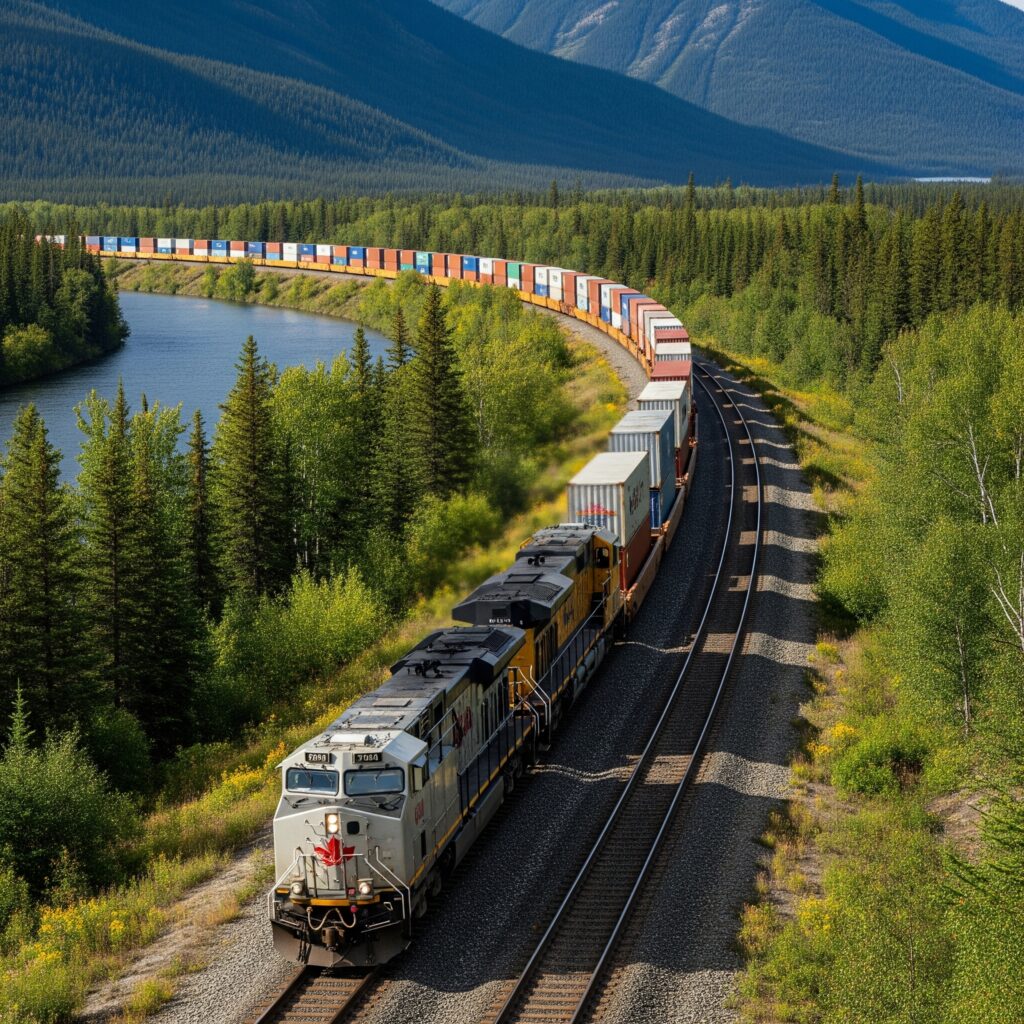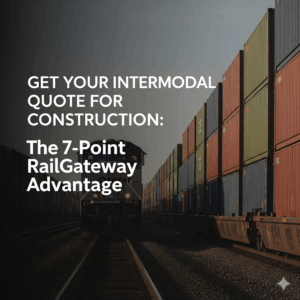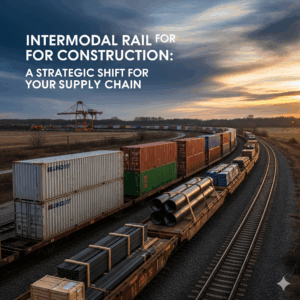For Canadian businesses, the road ahead is filled with persistent logistical challenges. Volatile fuel prices eat into margins, constant highway congestion causes unpredictable delays, a chronic shortage of truck drivers squeezes capacity, and a growing number of stakeholders are demanding more sustainable supply chains. For companies that rely on moving goods across our vast country, sticking with traditional over-the-road trucking for every long-haul shipment is becoming a significant operational and financial strain.
There is, however, a powerful, modern, and surprisingly simple solution that directly tackles these challenges: full container intermodal rail shipping.
While it may sound complex, the principle behind full container intermodal rail shipping is one of elegance and efficiency. If your business is looking for a smarter way to ship, this comprehensive guide will serve as your introduction. We will walk you through everything you need to know – what full container intermodal shipping is, its nine core benefits that are reshaping Canadian logistics, and how your business can leverage this strategy to gain a decisive competitive advantage in 2025 and beyond.
What Exactly is Full Container Intermodal Rail Shipping?
Let’s start by demystifying the term. At its heart, intermodal shipping is a simple concept that has been refined over decades to create incredible efficiency. It’s all about moving freight from its origin to its destination using two or more modes of transportation – typically truck and train – without ever having to touch the cargo itself.
The Core Concept: A Seamless, Unbroken Journey
Imagine you need to ship a full container of goods from your facility in Toronto to a customer in Vancouver. In an intermodal move, that freight is loaded into a container, sealed, and that same container travels the entire distance by both truck and train. The goods are only handled twice: once when they are loaded at your door and once when they are unloaded at the final destination. This seamless, unbroken journey is the key to its efficiency, minimizing the risk of damage, loss, and delays associated with transloading (moving goods from one vehicle to another).
The Anatomy of a Full Container Intermodal Rail Shipment (Step-by-Step)
To make it even clearer, let’s follow a container on its door-to-door journey:
- First Mile (Drayage): The process begins when a specialized trucking company brings an empty intermodal shipping container to your facility. Your team loads the freight, and the container is sealed. This same truck then transports your full container to a local rail terminal. This short-haul trucking portion is known as “drayage.”
- The Long Haul (Rail): At the secure rail terminal, a massive crane lifts the container directly from the truck’s chassis onto a specialized railcar. This is where the magic happens. Your container joins hundreds of others on a train for the most efficient part of its journey: the long haul. It travels across the country on Canada’s world-class rail networks, operated by partners like CN and CPKC.
- Final Mile (Drayage): Once the train arrives at the destination rail terminal (e.g., in Vancouver), the process reverses. A crane lifts your container off the railcar and places it onto another truck chassis. This local truck then completes the final drayage leg, delivering the sealed container directly to your customer’s door for unloading.
Why the Container is King
The entire system works because of the standardized shipping container. These incredibly strong steel boxes – most commonly the 53-foot container in North America – are built to universal specifications. This means they can be easily and securely locked onto a truck chassis, stacked on a train, and lifted by cranes at any terminal, making the transfer between modes of transport incredibly fast and efficient.
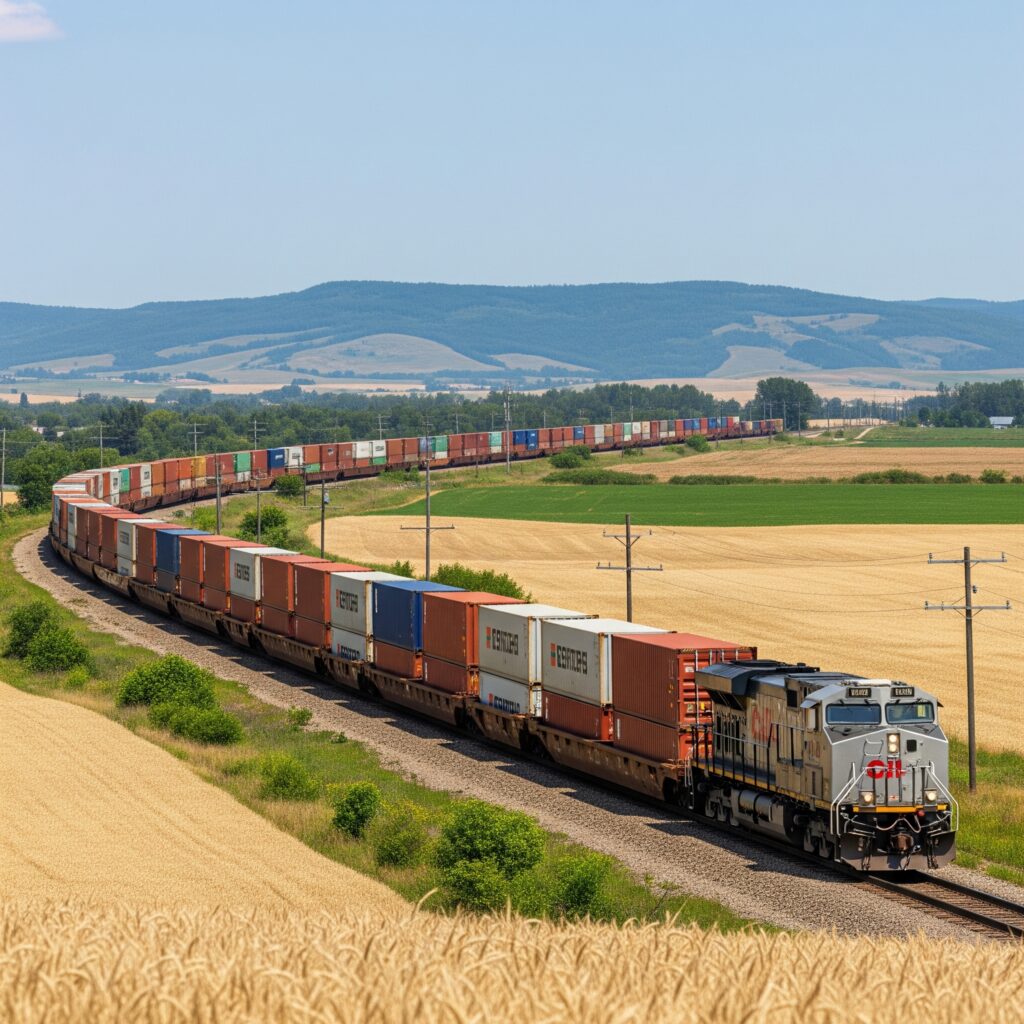
The 9 Key Benefits Driving the Shift to Full Container Intermodal Rail
Now that you understand the “how,” let’s explore the “why.” Businesses across Canada are increasingly making the switch to full container intermodal rail shipping because of its clear and compelling advantages.
1. Unbeatable Cost Savings
This is often the most significant benefit. For shipments traveling long distances, intermodal rail can reduce your freight costs by up to 40% compared to over-the-road trucking. This isn’t an exaggeration; it’s a matter of pure physics and fuel efficiency. A train can move one ton of freight approximately 470 miles on a single gallon of fuel. This incredible efficiency means lower fuel consumption per container, and those savings are passed on to you. By working with an expert partner like RailGateway, you also gain access to preferential rates with major carriers like CN and CPKC, further enhancing your savings.
2. Rock-Solid Reliability and Transit Times
In logistics, predictability is money. Intermodal rail operates on a foundation of reliability. Trains run on tightly managed, fixed schedules across dedicated railway networks. They are not subject to the same variables that plague highway transport, such as traffic congestion, road construction, weigh station inspections, or weather-related closures. This results in highly predictable transit times and more reliable delivery windows for your customers.
Furthermore, while some perceive rail as slow, this is a common misconception. For long-haul lanes (e.g., Montreal to Edmonton or Toronto to Calgary), the door-to-door transit time for an intermodal shipment is often comparable to that of a single-driver truckload.
3. A Significantly Greener Supply Chain
In today’s world, sustainability isn’t just a buzzword; it’s a business imperative. Customers, investors, and employees are all demanding that companies reduce their environmental impact. Choosing intermodal rail is one of the most effective ways to make your supply chain greener. According to the Association of American Railroads, moving freight by rail instead of truck can lower greenhouse gas emissions by up to 75%. This powerful statistic allows your business to meet its ESG (Environmental, Social, and Governance) goals and proudly market your commitment to sustainability.
4. Enhanced Cargo Safety and Security
Your cargo is valuable, and protecting it is paramount. Intermodal shipping offers a safer and more secure journey for your goods. Firstly, rail transport has a significantly lower rate of accidents compared to highway travel. Secondly, the entire process is designed for security. Your freight is sealed in an anonymous, incredibly durable steel container and travels through highly secure, monitored rail terminals with restricted access. This dramatically reduces the risk of in-transit theft or damage compared to a truck parked at a public rest stop overnight.
5. Massive Scalability for Your Growing Business
As your business expands, your shipping needs will grow with it. Intermodal rail is built for scale. A single freight train can carry the load of more than 280 trucks. This means that as your volume increases from one container to five, ten, or even fifty, the rail network can easily absorb that growth without the capacity constraints often seen in the trucking market. You no longer have to worry about finding dozens of available trucks and drivers during peak season; the capacity is readily available.
6. Extensive North American Coverage
RailGateway leverages the vast, continent-spanning networks of our partners, CN and CPKC. This infrastructure connects all major Canadian markets, from coast to coast, and provides seamless, cross-border access to key commercial centers throughout the United States, including the critical Mississippi Corridor. Whether your freight needs to move from Halifax to Vancouver or from Ontario to Texas, the intermodal network provides a reliable and efficient pathway.
7. Reduced Product Wear and Tear
The journey for your goods is physically smoother by rail. Long-haul train travel avoids the constant vibrations, bumps, and shocks of aging highway infrastructure. This gentle ride means less wear and tear on your products and their packaging, reducing the likelihood of load shifts and damage. For businesses shipping fragile, sensitive, or high-value goods, this is a crucial but often overlooked benefit.
8. Increased Supply Chain Resilience
Relying on a single mode of transport makes your supply chain vulnerable. A spike in diesel prices, a driver strike, or a seasonal capacity crunch in the trucking industry can bring your operations to a halt or lead to exorbitant costs. By integrating full container intermodal rail shipping into your logistics strategy, you build resilience. This diversification gives you a reliable and cost-effective alternative, ensuring you can keep your goods moving regardless of volatility in other markets.
9. Simplified Logistics with an Expert Partner
At first glance, coordinating drayage carriers, rail terminals, and final delivery might seem daunting. However, the true benefit comes from leveraging the expertise of a partner like RailGateway. We manage the entire process for you. You get a single point of contact and one simple invoice for the complete door-to-door move. We handle all the complexities behind the scenes, transforming a sophisticated logistics network into a streamlined, stress-free solution for your business.
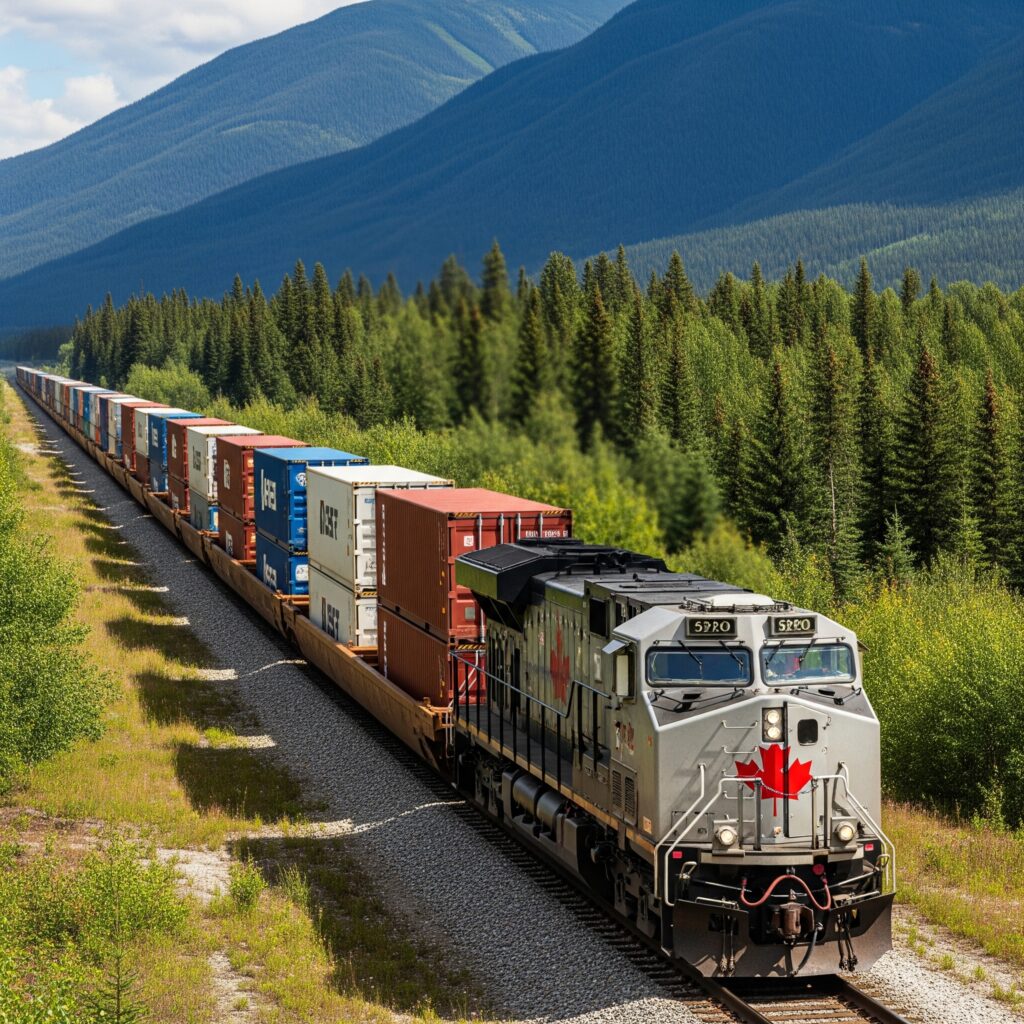
Is Intermodal Rail the Right Fit for Your Freight?
While intermodal offers powerful benefits, it’s most effective under specific conditions. This section will help you determine if it’s the right solution for your business needs.
Ideal Freight Characteristics
- Distance: Intermodal delivers the best ROI on long-haul shipments, typically those traveling over 700-800 kilometers. The efficiency of rail more than compensates for the drayage costs at both ends over these longer distances.
- Weight & Density: Rail is excellent for moving heavy, dense products. Since you are not constrained by the same strict road weight limits as a truck over the long-haul portion, you can often load containers heavier, optimizing your cost per pound.
- Time Sensitivity: If your freight is extremely urgent and requires next-day delivery from Toronto to Vancouver, expedited air or team-driver trucking is the better option. However, for most standard, non-urgent shipments where you have a few days of lead time, intermodal is a perfect fit.
Rail vs. Trucking: A Head-to-Head Comparison
| Feature | Full Container Intermodal Rail | Over-the-Road Truckload |
| Cost | Excellent for long-haul (700km+) | Good for short-haul, High for long-haul |
| Speed (Long Haul) | Good, reliable, and comparable to single-driver trucks | Can be faster with team drivers, but subject to delays |
| Carbon Footprint | Low (Up to 75% less GHG emissions) | High |
| Capacity | Virtually unlimited; ideal for high volume | Limited by driver and equipment availability |
| Best Use Case | Consistent, heavy, long-distance freight | Urgent, short-distance, or time-critical freight |
How to Get Started with RailGateway
Making the switch to intermodal is simpler than you think. Our entire process is designed to be transparent and effortless for our clients.
What You Need for an Accurate Quote
To provide you with the most accurate and competitive rate, our team just needs a few key pieces of information about your shipment:
- Origin
- Destination
- Container Size
- Type of Shipment
The Simple Quote Process
Once you submit your details on our “Get a Quote” page, you are not just getting an automated, generic price. Our team of logistics experts personally reviews every request. We analyze the lane, leverage our partnerships with CN and CPKC, and engineer the most efficient and cost-effective routing for your specific needs.
Ready to see the cost savings for yourself?
Get your free, no-obligation quote from RailGateway today and unlock a smarter way to ship.
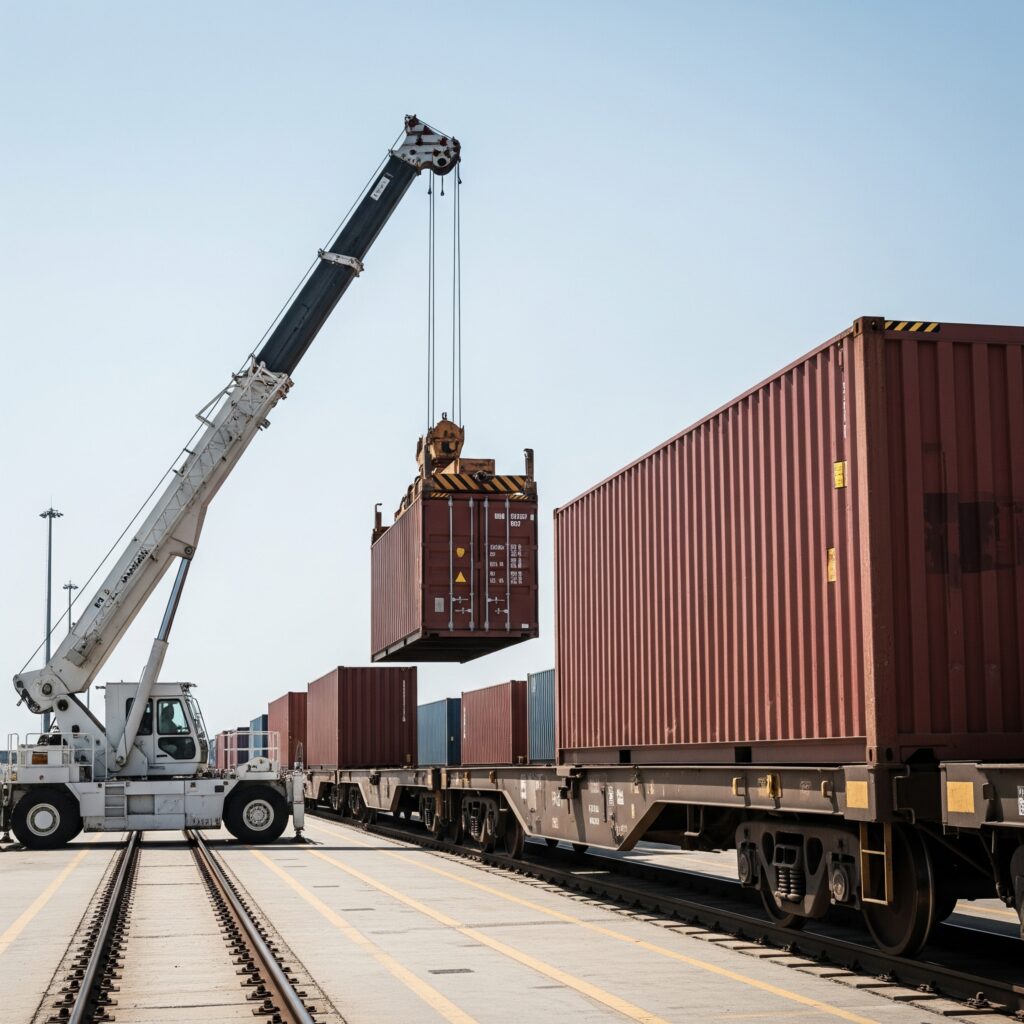
Conclusion: Your Gateway to a More Efficient Future
The logistics landscape in Canada is evolving. Businesses that adapt and embrace smarter strategies will be the ones that thrive. Full container intermodal rail shipping is no longer a niche alternative; it is a mainstream, powerful tool for building a more cost-effective, reliable, and sustainable supply chain.
By leveraging the immense efficiency of Canada’s rail network, you can significantly reduce your freight spend, improve the predictability of your deliveries, and take a major step towards meeting your environmental goals. The perceived complexity of intermodal vanishes when you work with a dedicated expert whose sole focus is to manage the process for you.
Don’t let outdated logistics strategies hold your business back. It’s time to explore a better way forward.
Have questions or a complex shipping need? Contact us to discuss a custom solution with one of our logistics experts, or fill out our online quote form to get a detailed rate for your next shipment and see the benefits for yourself.
Additional Resources
To further your understanding of the benefits and scope of intermodal rail freight in Canada, here are some official resources from industry and government authorities:
- Railway Association of Canada – Why Rail?
https://www.railcan.ca/why-rail/- Description: This page from Canada’s primary railway association provides key facts and statistics on the safety, sustainability, and efficiency of rail transport, reinforcing many of the benefits discussed in this guide.
- Transport Canada – Overview of Freight Rail Transport
https://tc.canada.ca/en/rail-transportation/freight-rail-transportation/overview-freight-rail-transportation- Description: An official overview from the Government of Canada that details the role, regulation, and importance of the freight rail industry to the national supply chain.
- CN – Our Network Map
https://www.cn.ca/en/our-services/maps-and-network/- Description: An interactive map from Canadian National Railway showcasing the vast, continent-spanning network that makes North American intermodal shipping possible.
- Statistics Canada – Rail Transportation Statistics
https://www.statcan.gc.ca/en/subjects-start/transportation/rail- Description: This is the official hub for Canadian rail data, providing up-to-date statistics on cargo volumes, commodities shipped, and industry performance.

